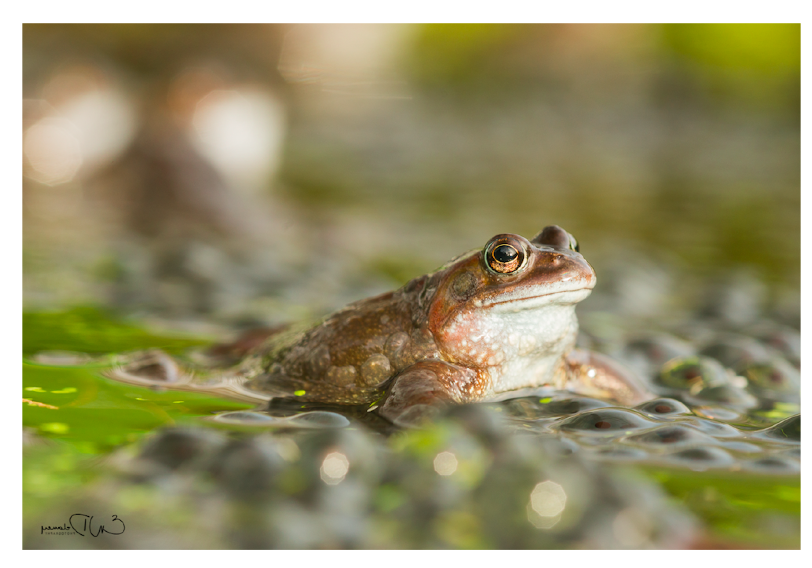IPCC are hopping you become a citizen scientist and join the Hop To It Frog Survey 2023
2.2.23
Each year the Irish Peatland Conservation Council co-ordinate the Hop To It Frog Survey, Ireland’s longest running Common Frog survey. To celebrate World Wetlands Day 2023 the IPCC are launching this years survey. The Hop To It Frog Survey is a citizen science initiative where we ask members of the public to submit their sightings of the various stages of the frog life cycle to the Hop To It Frog Survye on IPCC’s website.
Ireland only has one type of native frog the Common Frog (Rana temporaria). You can expect to find the Common Frog in natural damp habitats in woodlands, bogs, fens and gardens nationwide. The Common Frog has smooth, moist skin and the colourful patterns on the frog’s skin help to disguise it from enemies such as rats, herons and hedgehogs. A frog can also make it’s skin become darker to match it’s surroundings. This colour change takes about two hours to effect. They have powerful hind legs that make it possible for them to jump great distances.
Frogs begin their lives as eggs, known as frog spawn. In spring after the eggs hatch tadpoles emerge. Tadpoles live in freshwater and breathe through gills, they are also vegetarians feeding on algae which helps to regulate blooms in ponds. As they grow their bodies under go many changes so that by the time (early summer) they have become adult frogs, they are able to live on land and breathe air through lungs. The great change that takes place during the development of a frog is known as metamorphosis. Frogs feed mainly at night around the edges of ponds, using their long, sticky tongues to capture flying insects and beetles, or to ensnare slugs and snails, their staple food. Due to their diet the Common Frog is often referred to as a ‘Gardener’s Friend’.
Monitoring the population of Common Frogs can help us to better understand changes in our local environments quality as they are biological indicators to pollution. This year watch for the Common Frog and the various stages of its lifecycle in your area. To become a citizen scientist all you have to do is submit your record to the Hop To It Frog Survey on IPCC’s Website.
Editors Notes:
Image: E. Delaney, IPCC Hop To It Citizen Scientist

